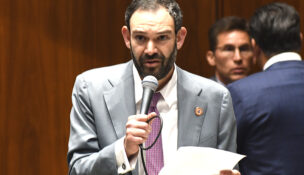Experts say immigration overhaul could remove edge for families
Arizona Capitol Reports Staff//April 25, 2008//[read_meter]
Experts say immigration overhaul could remove edge for families
Arizona Capitol Reports Staff//April 25, 2008//[read_meter]
For years, immigration law in the United States has given an edge to families.Those who can show that they have family members in this country have a better shot at...
No tags for this post.

















